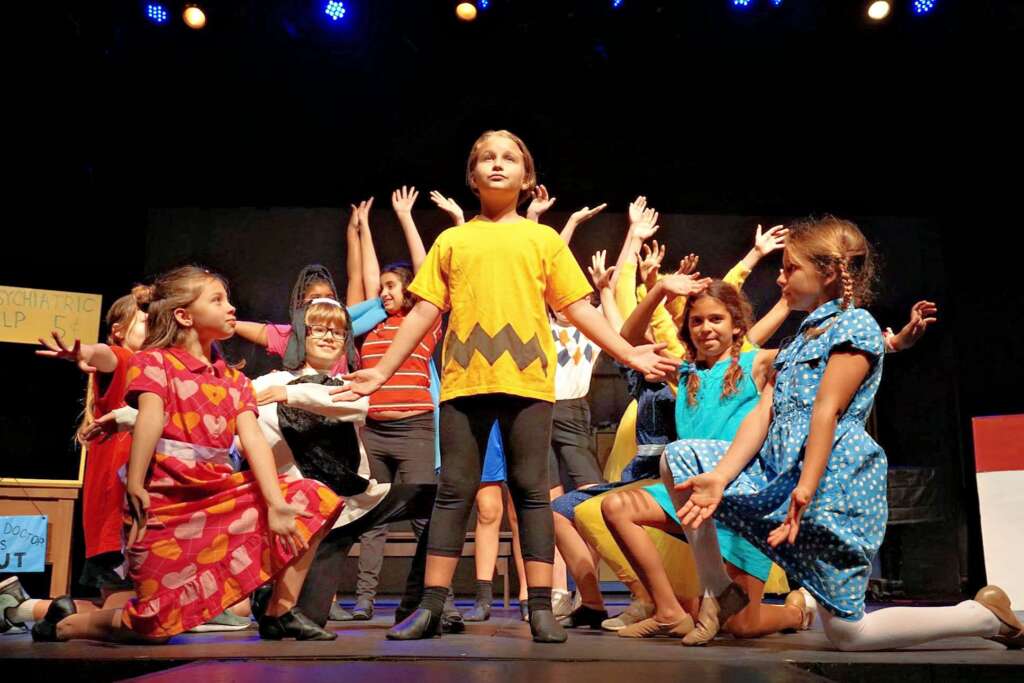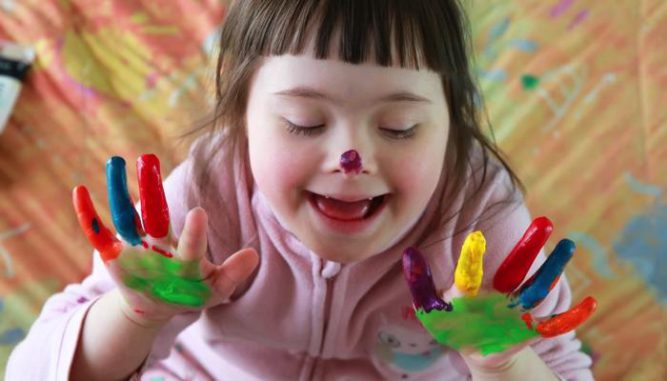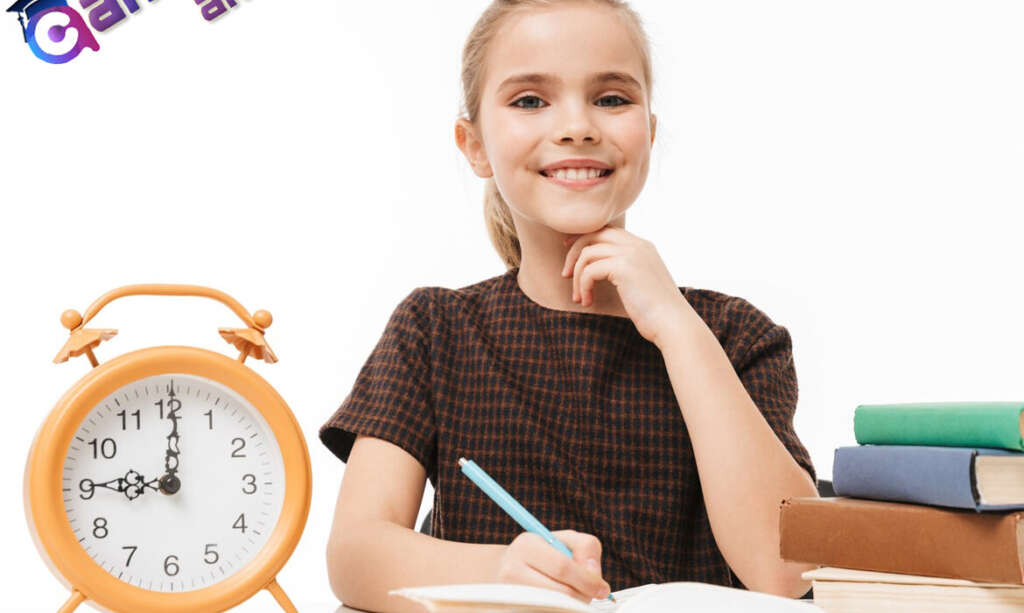

Autism spectrum disorder is a condition related to brain development that impacts how a person perceives and socializes with others, causing problems in social interaction and communication. The disorder also includes limited and repetitive patterns of behavior. The term “spectrum” in autism spectrum disorder refers to the wide range of symptoms and severity.
Signs of autism in young children include:
not responding to their name
avoiding eye contact
not smiling when you smile at them
getting very upset if they do not like a certain taste, smell or sound
repetitive movements, such as flapping their hands, flicking their fingers or rocking their body
not talking as much as other children
repeating the same phrases
Autisim and Drama
DRAMA CAN HELP AUTISTIC CHILDREN IMPROVE THEIR SYMPTOMS
Drama
- GAME AND DRAMA
✅Children and Play
For the drama to be healed to come to life and be reimagined, you need to take advantage of the initial experiences and benefits.
It can be widely used to play, popularize.
the game; First of all, it is a serious effort to develop, mature and adapt to life, all skills and experiences related to affective and exercise. The child experiences and through play. You can use the definition of the items, the trainings that will be used to benefit from the training. He even learns and comprehends through play in relations between people. You learn how to accept sharing with your own means through campaigns. Play experiences learn education for children, and how to give appropriate expression to children.
The play child is the natural and most active learning environment. Age of play and education as a whole. It can be used as a tool in educational programs that does not cause problems, cannot be considered different, and in diversity such as social.
The game is freedom. Playing children enjoy the freedom of being away from their elders. Children’s speech, thinking and placement all, decorate with ornament. You will not be able to play the little things from the little ones and what you can see from the children alone, you can do new things by adding new things on your own.
A lot that can contribute to the competition. Piaget (Piaget), the pioneer of the cognitive model, has not yet used the game (Piaje) and it has been emphasized that it is in use. Game child’s childhood, recall, recall, exemplary and exemplary design.
PHASE ONE 1. WEEK
A. KNOWLEDGE AND MEETING ACTIVITIES
- Getting to know oneself
- Getting to know others
B. COMMUNICATION AND INTERACTION ACTIVITIES - Healthy Communication with Oneself
- Healthy Communication with Others
- Adapting to New Environments and Situations C WARMING, HARMONY AND SAFETY ACTIVITIES
- Health Communication with Oneself
- Healthy Communication with Others
- Acting with Love, Respect, Tolerance, Solidarity and Responsibility in Individual and Group Activities
WEEK 2
A. WORKS ON THE SENSORS
- The Relationships Between Individual Characteristics and Sensory Studies
- Willingness to Use the Senses in Daily Life B. PERCEPTION EDUCATION AND EMPATIC DEVELOPMENT STUDIES 1. Personal Communication with Oneself and Others
- Self in Events, Facts and Problems Putting Others in their Place
- Concepts on Sense and Perception Education
WEEK 3
A. WORKS ON COMMUNICATION SKILLS
- Verbal and Non-Verbal Communication by Activating Bodily Energy
- Healthy Communication with Oneself and Others
- Putting Oneself in Others’ Place in Events, Cases and Problems B. WORKS ON THE RELATIONSHIP OF GAME AND CREATIVE DRAMA 1. Concepts related to Creative Drama
- Characteristics of Play
- Importance of Children’s Play
- Learning Through Play
WEEK 4
A. IMPROVEMENT STUDIES
- Revealing Creativity and Using the Imagination in Developing
- Correct and Properly Speaking Turkish
- Relationships Between Improvisations and Group Activities B.
WORKS ON THE RELATIONSHIP OF THEATER AND CREATIVE DRAMA - Creative Drama of Basic Skills Related to Acting
- Creating a Scene Suitable for Animation
WEEK 5
A. MOVEMENT, SOUND AND BREATH WORKS
Expressing Oneself Through Bodily Movement B.
STUDIES ON THE BASIC CONCEPTS OF CREATIVE DRAMA 1. Concepts Related to Creative Drama
- Relationships Between Concepts Related to Creative Drama
- Importance of Creative Drama in Education
WEEK 6
A. STUDIES ON THE STAGES OF CREATIVE DRAMA
The Relationships Between The Theoretical Dimension of Creative Drama and Workshop Studies B. STUDIES ON THE RELATIONSHIP OF ART TYPES AND CREATIVE DRAMA
The Relationships Between Creative Drama and Related Concepts
- WEEK
SOCIAL LEARNING AND CREATIVE DRAMA STUDIES - The Relationships Between Creative Drama and Solving Social Problems
- Experiences in Creative Drama in Solving Problems B.
WORKS ON STAGE INFORMATION 1. Creative Drama Studies and Scene Bigs - Sound While Animating
- Using the Body Effectively While Performing Animation
9.WEEK
- A. WORKS ON COMMUNICATION AND INTERACTION
- Willingness to Know Oneself and Others
- Good Communication With Oneself and Others
- Communication Made Verbally and Nonverbally by Activating Bodily Energy B. WORKING ON WARMING, HARMONY AND SAFETY 1 DETAIL Actions Taken Together with the Group
- Secure Relationships Established by the Person with Others
- Verbal and Nonverbal Communication by Mobilizing Bodily Energy
10.WEEK
A. STUDIES ON THE COMPONENTS OF DRAMATIC FICTION
- Concepts Related to Creative Drama
- Relationships Between Concepts Related to Creative Drama
11.WEEK
A. SOUND AND BREATH STUDIES • The Relationships Between Individual Characteristics and Sensory Studies B. STUDIES ON THE RELATIONSHIP OF GAME AND CREATIVE DRAMA
- The Relationships Between Creative Drama and Related Concepts
- The Characteristics of Play
- The Importance of Children’s Plays
- Learning Through Play

Chess
EFFECTS OF CHESS ON THE DEVELOPMENT OF CHILDREN
The fact that chess is directly related to academic performance has made it an important place in the education system. Chess also contributes to children’s awareness and development of their abilities and to use their intelligence more effectively. In addition, chess helps children develop skills such as planning, evaluating options, imagination, focusing, analysis, foresight and theoretical thinking.
Planning
With chess, children learn to focus on long-term goals and take steps to reach their goals. At the same time, they learn to make the necessary changes by reviewing their plans in the face of different developments.
Evaluating Options
Instead of choosing the first option that children see with chess; they learn to consider alternatives and evaluate the advantages and disadvantages of each alternative for different situations.
Visualization (Visualization)
Children learn to visualize events and situations before they become a series of events. Developing the ability to visualize is provided by many practices before they touch the pieces, starting with one move and then visualizing several moves in their minds.
Focus (Attention)
Chess teaches careful observation and concentration.
Strong Analysis
Chess teaches children to evaluate many events individually or in succession. It helps to find the answer to the question of whether what will happen will help or harm me, by thinking logically. Instead of giving immediate reactions, it supports to take a behavior by analyzing the situation and events.
Forward Thinking (Seeing)
With chess, children learn to think before making a move. The child begins to think about the reaction that will follow after every move he makes and how he will respond to this reaction. Chess teaches patience and thoughtfulness over time.
Theoretical Thinking
Chess teaches children to see the big picture by periodically dropping details. It also helps to build models and use that model in different but related situations.
In addition to all these, it helps children reach many ideas simultaneously. They learn to evaluate more than one option at the same time in any situation. They gain and develop the ability to think well, solve problems better, and make independent and correct decisions in critical situations.
Chess acts as a bridge that brings together students from different religions, languages, genders and races. In addition to the development of friendships and the ability to fight individually, it also helps to develop teamwork, cooperation and a sense of unity in team competitions. Chess teaches sportsmanship. It teaches you to win successfully or to struggle without giving up while being drawn to the defense. While none of these abilities are unique to chess, they all form part of the game.
Studies have shown that children who are interested in chess have high critical and creative thinking skills and are successful in mathematics and reading lessons.
Chess increases motivation in children, helps to improve behavior, increases self-confidence and participation; It is a sport that is easy to learn and appeals to all ages. The biggest advantage of chess is that it allows children to have a pleasant time while developing their intelligence and skills.

Speed Reading
Speed Reading
techniques are among the features and requirements that we may need in our daily life as well as in different ways in business life. What is speed reading? In this article, where we provide detailed information about speed reading techniques by understanding, we will share with you the benefits of speed reading by understanding rather than the benefits of speed reading.
Speed reading techniques, which are included in certificate training programs by the institutes, are one of the features that contribute to success in working life.
What is Speed Reading?
Speed reading with comprehension; As the name suggests, it is the reader’s ability to read what they read faster than normal but with better understanding. Using this technique it is possible to read and understand any content faster than normal people.
The communication difference between the eye and the brain plays a decisive role in reading speed. The fact that the brain is constantly building different things and sending messages to the whole system by perceiving what it sees reveals that our brain should work much faster.
The eyes work slower than the working speed of the brain. For this reason, it is a little more difficult to transmit the read, that is, the seen text, to the brain in a way that the brain can fully understand, rather than speed reading.
Speed reading techniques training puts the working and perception speed between the brain and the eye a little more into balance. In other words, these techniques allow the message to be transmitted to a fast-working brain much faster due to the slowness of the eye, bringing the working speed between the two closer to each other. These techniques also significantly increase the brain’s ability to quickly perceive what is being read.
One of the most important benefits of speed reading is that it allows the person to read more in normal time, allowing new information to be added to the general knowledge pool. People who read a lot always have the ability to make quick decisions about events around them from a different perspective.
In other words, it is possible to say that these techniques are more useful for people who read a lot.
EFFECTIVE SPEED READING COURSE PROGRAM
1.MONTH
A. READING HABITS, DETERMINATION OF READING AND UNDERSTANDING LEVEL
B. WHAT IS EFFECTIVE SPEED READING?
- History of speed reading
- The benefits of speed reading
- Speeds by education level
The development of students’ effective, fast and efficient reading skills increases their success in lessons; It provides an opportunity and environment for more knowledgeable, cultured and more literate individuals to grow.
2.MONTH
The system consists of specially prepared “Speed hoc. PRO Computer Pro”, “Active Speed Reading Practice Book” and “Eye Bounce Measurement Glasses. Active Speed Reading method, various eye exercises in the computer program.
- Perception
- Sight
- Reading
- Speed reading Fast and effective reading
Definition of reading
Integrating parts
Speed and concentration
keep in mind
3.MONTH
QUICK READING EXERCISES (EXERCISE)
- Computer exercises
- Text exercises
a. Line work
b. Round studies
c. Punctuation studies
d. Column studies
e.Other works
During the course, teaching methods and techniques such as learning by doing, question-answer, text completion, text editing, photographic reading, active reading, deep reading and mind mapping are used.
At the beginning and at the end, the reading speed of the trainees increases.
4.MONTH
- System preview
- Photographic reading
a. Preparation
b. Blur view - Pre-reading
a. Browsing
b. Purpose setting
c. Exercises It consists of specially prepared “read fast. PRO Computer Pro”, “Active Speed Reading Practice Book” and “Eye Bounce Measurement Glasses. Active Speed Reading method is done with various eye exercises in computer program
5.MONTH
Very fast reading
A.Increasing eye capacity
B.Block by block reading
C.Reading in line with the purpose D.Active (active) reading
E.Flexible reading i) Browsing ii) Skip reading iii) Interlace reading iv) Selective bending
6.MONTH
Deep reading
a. Note-taking techniques
Cause-effect network
c. Hierarchical table
d. Mind map drawing
At the beginning and end of the course, the reading speed, reading efficiency and comprehension levels of the trainees are determined.
Comparisons are made and the increments are revealed.
7.MONTH
- Perception
- Sight
- Reading
- Speed reading
a. Fast and effective reading
b. Definition of reading
c. Integrating parts
d. Speed and concentration,keep in mind
At the beginning and end of the course, the reading speed, reading efficiency and comprehension levels of the trainees are determined.
Comparisons are made and the increments are revealer.
8.MONTH
a. Increasing eye capacity
b. Block by block reading
c. Reading in line with the purpose
d.Active (active) reading
e.Flexible reading
-Browsing
-Skip reading
-Scanning reading Optional Engagement
9.MONTH
- The “Effective Speed Reading” program, whose short name is EHO, was developed to enable readers to access information faster and more effectively, to have an efficient reading habit, and to better understand what they read.
It is a theoretical and practical reading/learning system.
The system is custom made
10.MONTH
A. EFFECTIVE SPEED READING SYSTEM 5.In deep reading.
a.Note taking techniques
b. Cause-effect network
c. Hierarchical table
d. Mind mapping
reading comprehension exercise accelerates mental activities.
perceives the world better

Special Education
1.MONTH
AREAS OF COGNITIVE DEVELOPMENT ATTENTION
- Visual / spatial relationships
- Attention / joint attention
- Memory / object persistence
- Personal care routine
- Cause-effect relationships
- Imitation
- Number sense
- Play / symbolic play
- Matching / classification
- Problem solving
2.MONTH
RECIPIENT LANGUAGE DEVELOPMENT AREA
- Attention and discrimination
- Understanding non-verbal communication
- Meaning development
- Grammatical structures
3.MONTH
EXPRESSIVE LANGUAGE FIELD Grammatical structures
- Communication with others
- Phoneme (phoneme) acquisition and intelligibility
- Word production
- Grammatical word, suffix and construction production
4.MONTH
ROUGH MOTOR DEVELOPMENT AREA
- Movement
- Balance
- Object control
activity
balloon inflator
jump rope
ball throw
5.MONTH
FINE MOTOR DEVELOPMENT AREA
- Grasping
- Hand dexterity
- Letting go
activities
-pencil holding
-handwriting practice
6.MONTH
SOCIAL AND EMOTIONAL DEVELOPMENT
- Interaction with adults
- Relationship with adults
- Interaction with peers
- Relationship with peers
- Relationship with others with one’s own identity
- Awareness of talent
Social-Emotional Development Area - Emotion display
- Empathy
- Emotion regulation
10 Impulse Control - Social signification
7.MONTH
ADAPTIVE SKILLS DEVELOPMENT FIELD
- Eating and drinking skills Adaptive Skills Development
- Personal care skills
- Dressing-undressing skills
- Toilet skills Area
8.MONTH
learning activities by doing
attention
focus
perception
coordination
9.MONTH
- Cognitive Development Area
- Receptive Language Development Area
- Area of Expressive Language Development
- Gross Motor Development Area
- Fine Motor Development Area
- Social-Emotional Development Area
- Adaptive Skills Development Area
activities and participation in these fields
